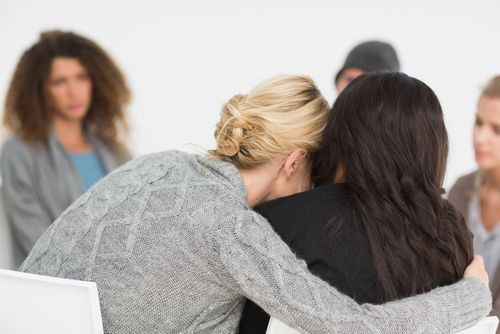States With More Abortion Restrictions Hurt Women's Health, Increase Risk For Maternal Death

Teenage girls with access to free birth control are less likely to get pregnant or an abortion, a study in the New England Journal of Medicine found this week. Which is why it’s not surprising to hear the states with more abortion restrictions also report more maternal deaths.
Since 2011, according to the Center for Reproductive Rights and Ibis Reproductive Health, Oklahoma, Mississippi, and Kansas have implemented 14 abortion restrictions — the most of any other state. Arkansas and Indiana were tied for the second-most restriction, while Florida, Arizona, and Alabama were tied for third. And out of all 50 states, it was the ones with more restrictions that also had higher, well, everything: maternal deaths, uninsured rates, infant and child death rates, teen drug and alcohol abuse, as well as lower preventive care and cancer screening rates.
"This report exposes the flimsy claims of politicians who have been shutting down women's health care providers under the patently false pretext of protecting women's health," Nancy Northup, president and CEO at the Center for Reproductive Rights, told the NY Daily News. "It clearly demonstrates how women and families have suffered as politicians put their ideological agenda before the real needs of their constituents."
Despite these findings, states continue to pass laws that don’t just shame women for considering an abortion, but it makes access to these services downright difficult, even impossible. Though the Women’s Health Protection Act was introduced to Congress in November 2013, it’s only had its first hearing in the Senate Judiciary Committee in July, the Daily News reported.
And despite these findings, that forcing reproductive ideals onto women ultimately hurts their and their baby’s health, a federal appeals court ruled yesterday that Texas could start to enforce abortion restrictions, which will ultimately cause a majority of the state’s facilities to shut down. I guess what they say is true: Everything is bigger in Texas, including their ignorance on the effects of such laws.
These restrictions are categorized as a health care crisis — and when you consider what open access to both services and education surrounding women’s and reproductive health, it’s categorized rightfully so. Unfortunately, laws like this are only projected to get worse. ThinkProgress reported it’s referred to as the “Targeted Regulation of Abortion Providers,” or TRAP, and “these laws have particularly taken root in Southern states, where an estimated 8.6 million women of reproductive age may soon be left with just 12 abortion clinics across five states.”
The truth is, when women are restricted access to reproductive services, like abortions and birth control, they’re twice as likely to get an abortion by any means necessary, hence a rise in maternal deaths. A study published in Reviews in Obstetrics & Gynecology, researchers found every year, across the world, 42 million women with unintended pregnancies choose abortion with nearly half of those procedures — that’s 20 million — being unsafe. Researchers cited the World Health Organization when they deemed unsafe abortion as the easiest way to prevent maternal mortality.
What’s the solution? “Preventing unintended pregnancy, providing better access to health care, and liberalizing abortion laws to allow services to be openly provided can reduce the rate of abortion-related morbidity and mortality,” researchers suggested.
Also, more female-to-female support systems and intervention programs, please.
Source: Burns B, Dennis A, Douglas-Durham E. Evaluating priorities: Measuring women’s and children’s health and well-being against abortion restrictions in the states. Research Report. Ibis Reproductive Health. 2014.



























